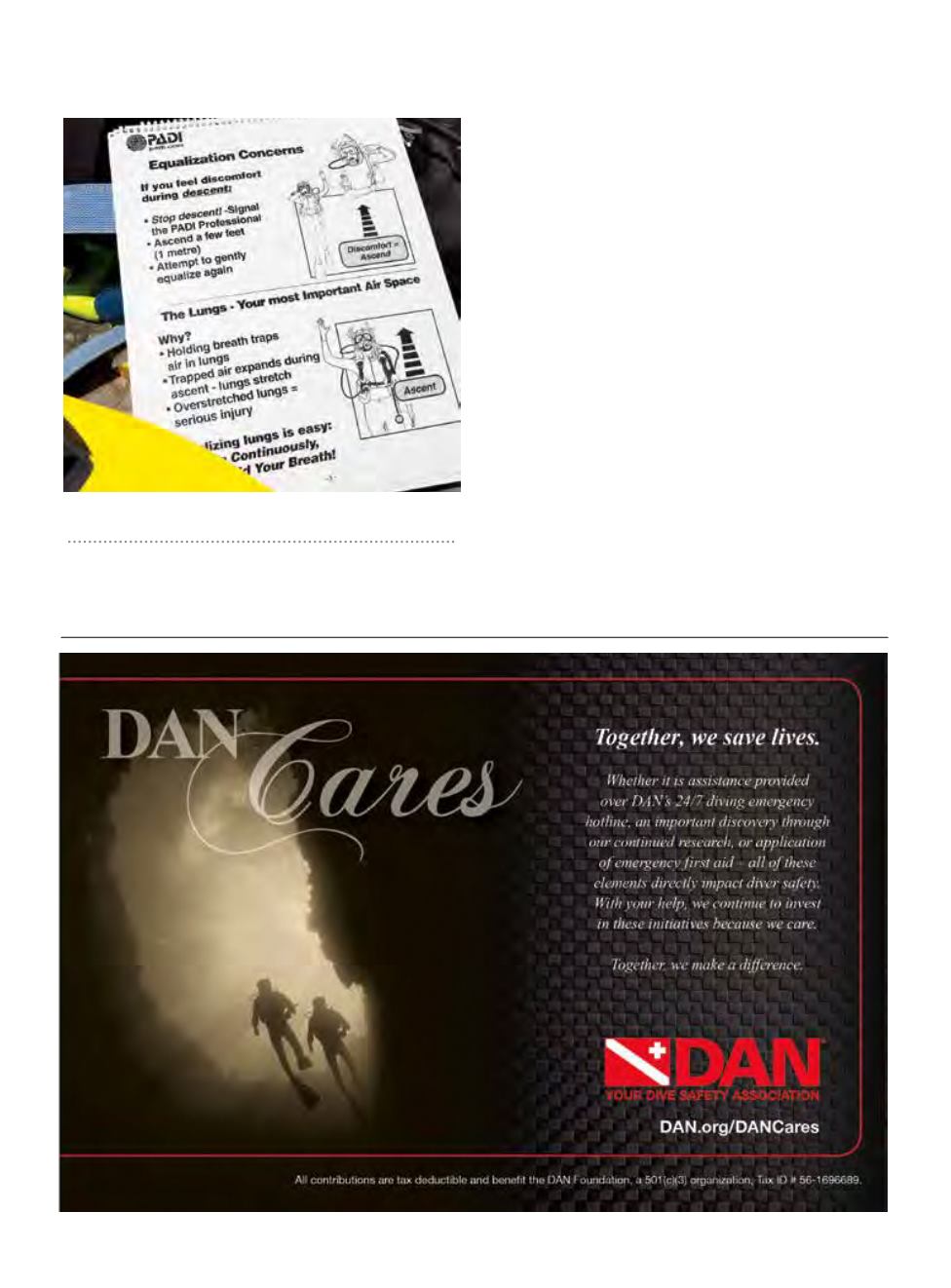
50
|
FALL 2014
How can the culture of dive safety be promoted?
Lippmann:
Incident reporting and analysis provide
strong tools on which to base relevant accident-
prevention protocols. DAN has a key role to play here,
and the diving community is better served if it helps
DAN collect information on diving incidents and
accidents so they can help guide training strategies and
diving practices. Unfortunately, in some places there is
a tendency to withhold important information about
accidents for fear of legal or commercial repercussions.
It would be great if this would change.
Heinerth:
As a young diver in Tobermory, Canada,
I took a class from a great role model named Dale
McKnight. Our class worked hard for days, practiced
skills and made plans to go on the deepest dive (and
first decompression dive) of our lives. We were on the
boat heading to the site when Dale told us that we had
done such a great job that he would reward us with an
extra 10 feet of depth and five more minutes of bottom
time. My colleagues hooted and hollered in excitement,
while I felt a deepening anxiety. With my head bowed, I
quietly muttered that I did not feel ready and would sit
on the boat. I was disappointed and embarrassed. Dale
tried unsuccessfully to reel me back into the dive.
After a few minutes, Dale admonished the other
divers for permitting him to shift a safe, organized
RESEARCH, EDUCATION & MEDICINE
//
E X P E R T O P I N I O N S
STEPHEN FRINK


